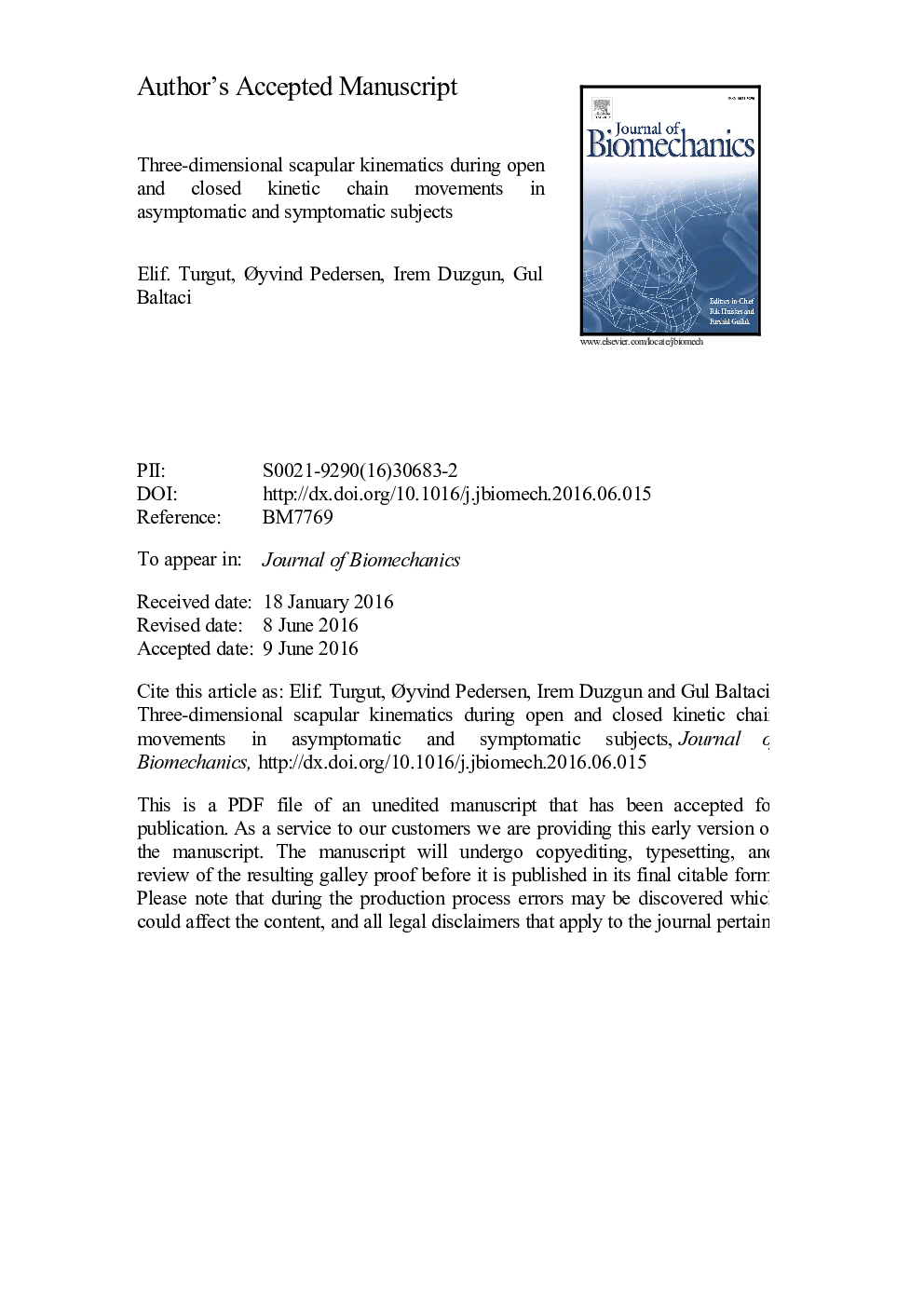| کد مقاله | کد نشریه | سال انتشار | مقاله انگلیسی | نسخه تمام متن |
|---|---|---|---|---|
| 5032451 | 1369984 | 2016 | 29 صفحه PDF | دانلود رایگان |
عنوان انگلیسی مقاله ISI
Three-dimensional scapular kinematics during open and closed kinetic chain movements in asymptomatic and symptomatic subjects
ترجمه فارسی عنوان
سینماتیک اسکاپولا سه بعدی در حرکات زنجیره ای جنبشی باز و بسته در افراد بدون علامت و بدون علامت
دانلود مقاله + سفارش ترجمه
دانلود مقاله ISI انگلیسی
رایگان برای ایرانیان
کلمات کلیدی
موضوعات مرتبط
مهندسی و علوم پایه
سایر رشته های مهندسی
مهندسی پزشکی
چکیده انگلیسی
The combination of open kinetic chain (OKC) and closed kinetic chain (CKC) exercises is commonly recommended in shoulder rehabilitation, aiming at improving strength and sport-specific performance. This study aimed to investigate the three-dimensional (3-D) scapular kinematics and bilateral symmetry of scapular motion during dynamic OKC and CKC movements in asymptomatic and symptomatic shoulders. Fifty subjects with unilateral shoulder pain (symptomatic subjects diagnosed with subacromial impingement syndrome, n=20) or without shoulder pain during active shoulder elevation (asymptomatic subjects, n=30) participated in the study. Furthermore, 3-D scapular kinematics were recorded using an electromagnetic tracking device in the sagittal plane of shoulder elevation for both the OKC and CKC conditions performed with slings. Data for scapular kinematics and symmetry angle (SA) were analyzed at 30°, 45°, 60°, 90°, and 120° of humerothoracic elevation. Analysis of variance models and Student׳s t-test were used to make comparisons between conditions. In general, the scapula was more externally rotated, upwardly rotated and anteriorly tilted for asymptomatic shoulders, and more upwardly rotated for symptomatic shoulders during CKC shoulder elevation. Further, comparisons of SA obtained during OKC and CKC movements revealed that during CKC, scapular motion was more symmetrical for upward-downward rotation and anterior-posterior tilt in asymptomatic shoulders and for anterior-posterior tilt in symptomatic shoulders, especially above 90° humerothoracic elevation. Differences in scapular motion during the CKC condition were in a specific pattern and enhanced symmetry, which would be considered to be a position less likely to produce compression of the rotator cuff tendons for both training in asymptomatic populations and for treatment in early rehabilitation of patients, such as those who have shoulder impingement syndrome.
ناشر
Database: Elsevier - ScienceDirect (ساینس دایرکت)
Journal: Journal of Biomechanics - Volume 49, Issue 13, 6 September 2016, Pages 2770-2777
Journal: Journal of Biomechanics - Volume 49, Issue 13, 6 September 2016, Pages 2770-2777
نویسندگان
Elif Turgut, Ãyvind Pedersen, Irem Duzgun, Gul Baltaci,
